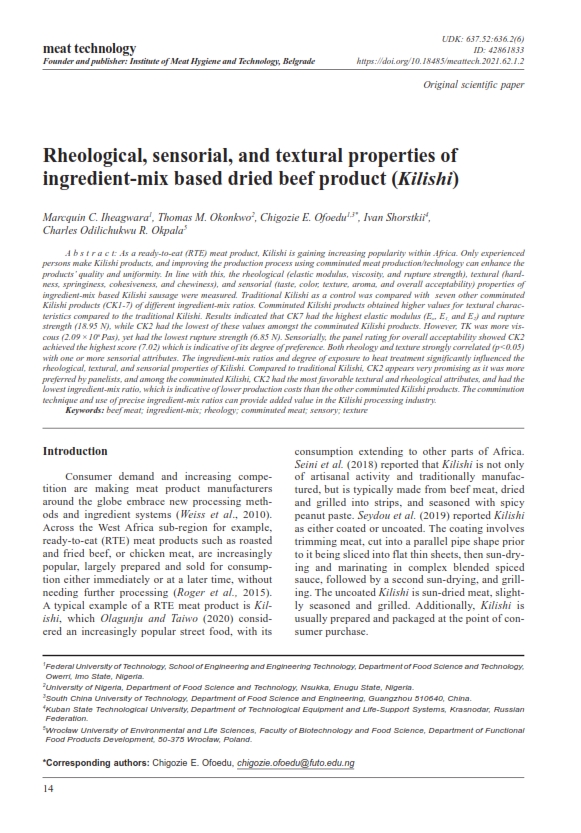Rheological, sensorial, and textural properties of ingredient-mix based dried beef product (Kilishi)
Abstract
As a ready-to-eat (RTE) meat product, Kilishi is gaining increasing popularity within Africa. Only experienced persons make Kilishi products, and improving the production process using comminuted meat production/technology can enhance the products’ quality and uniformity. In line with this, the rheological (elastic modulus, viscosity, and rupture strength), textural (hardness, springiness, cohesiveness, and chewiness), and sensorial (taste, color, texture, aroma, and overall acceptability) properties of ingredient-mix based Kilishi sausage were measured. Traditional Kilishi as a control was compared with seven other comminuted Kilishi products (CK1-7) of different ingredient-mix ratios. Comminuted Kilishi products obtained higher values for textural characteristics compared to the traditional Kilishi. Results indicated that CK7 had the highest elastic modulus (E strength (18.95 N), while CK2 had the lowest of these values amongst the comminuted Kilishi products. However, TK was more vis-Pas), yet had the lowest rupture strength (6.85 N). Sensorially, the panel rating for overall acceptability showed CK2 achieved the highest score (7.02) which is indicative of its degree of preference. Both rheology and texture strongly correlated (p<0.05) with one or more sensorial attributes. The ingredient-mix ratios and degree of exposure to heat treatment significantly influenced the rheological, textural, and sensorial properties of Kilishi. Compared to traditional Kilishi, CK2 appears very promising as it was more preferred by panelists, and among the comminuted Kilishi, CK2 had the most favorable textural and rheological attributes, and had the lowest ingredient-mix ratio, which is indicative of lower production costs than the other comminuted Kilishi products. The comminution technique and use of precise ingredient-mix ratios can provide added value in the Kilishi processing industry. cous (2.09 × 106 o , E 1, and E 2 ) and rupture.





